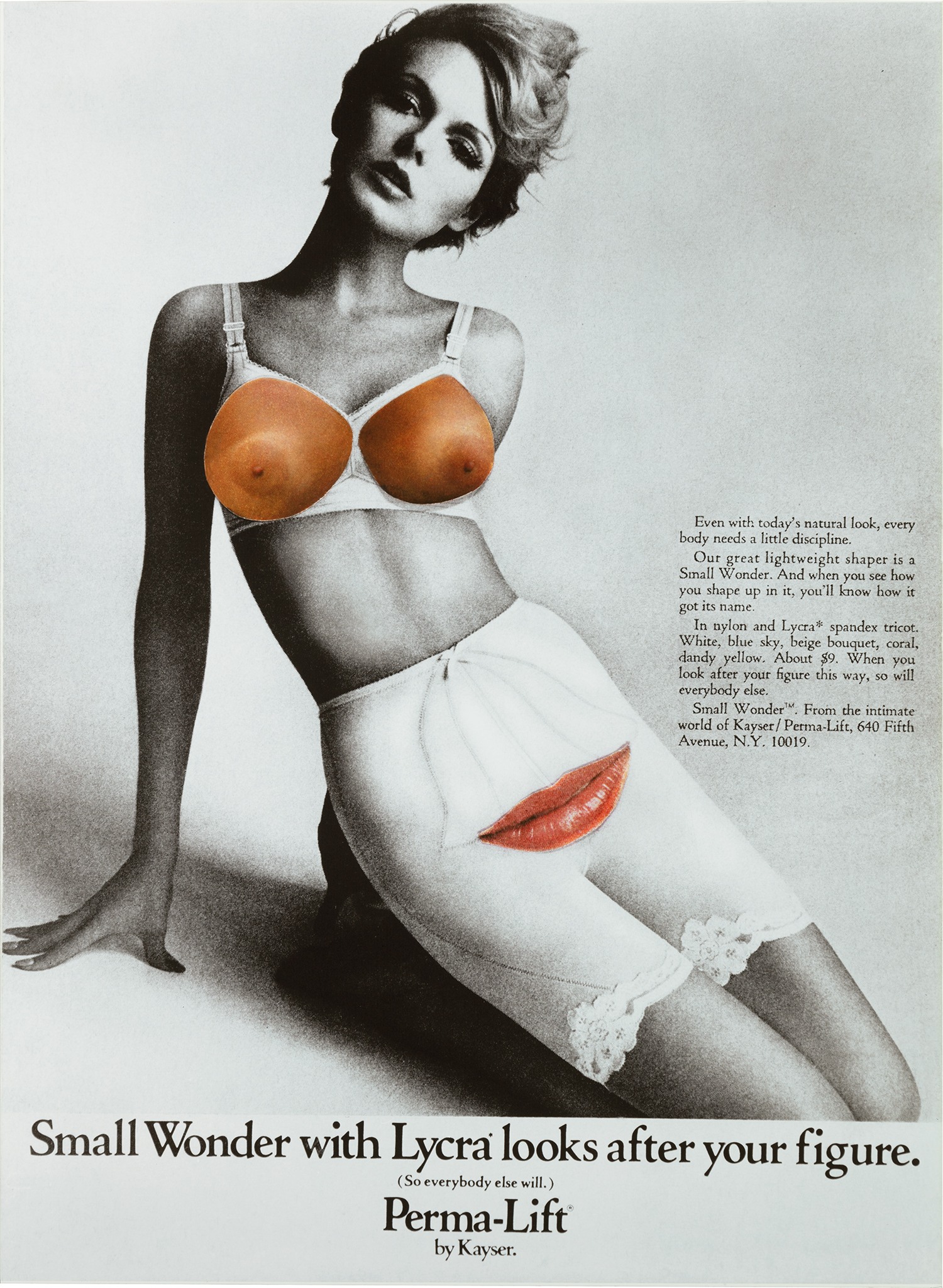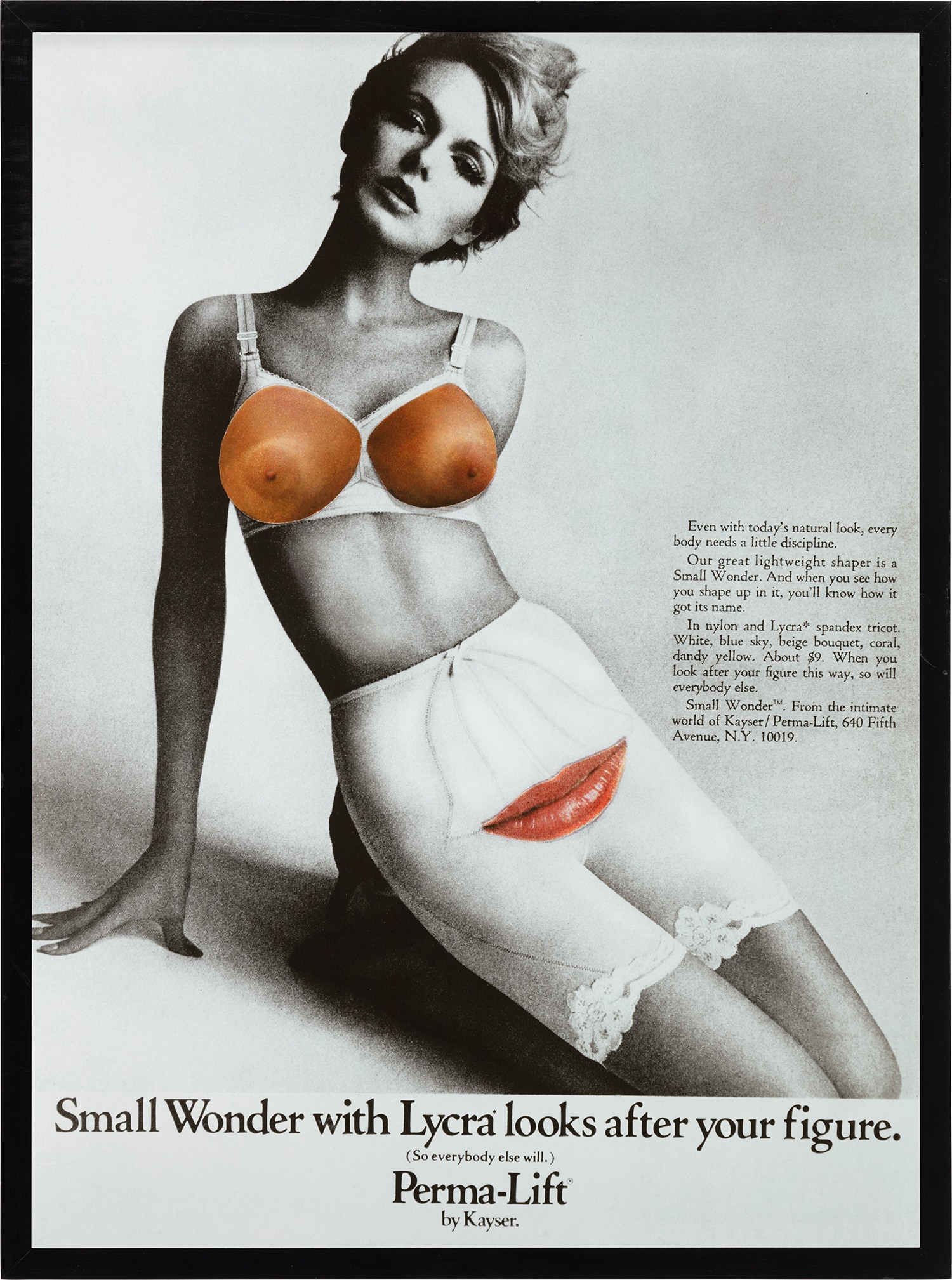





27
Martha Rosler
Small Wonder from the series Body Beautiful, or Beauty Knows No Pain
photomontage printed as chromogenic print, flush-mounted to acrylic
23 1/2 x 17 1/4 in. (59.7 x 43.8 cm)
Executed in 1966–1972, this work is number 2 from an edition of 10 plus 2 artist's proofs.